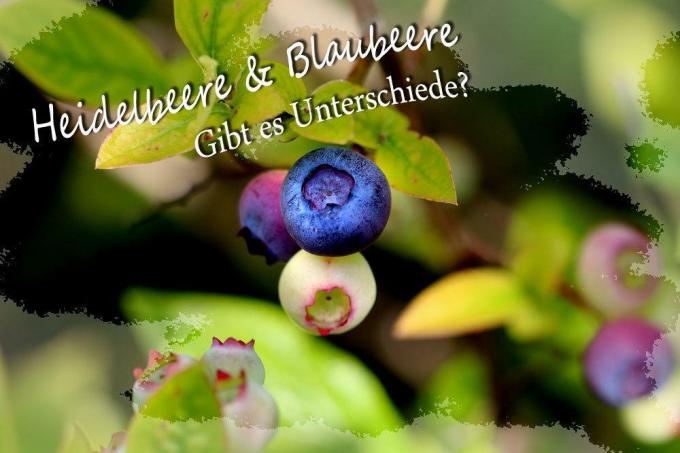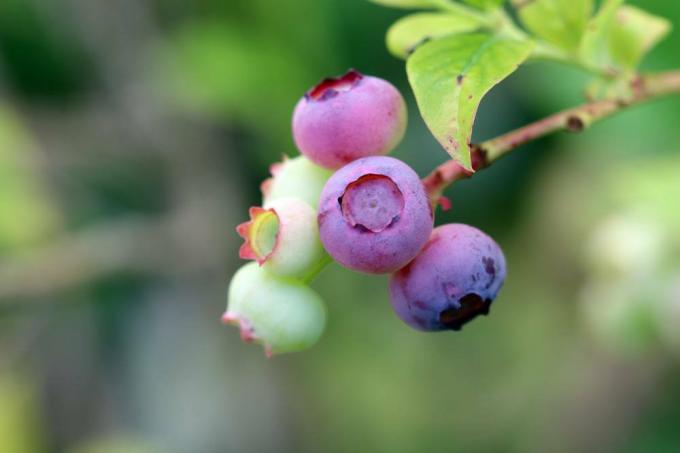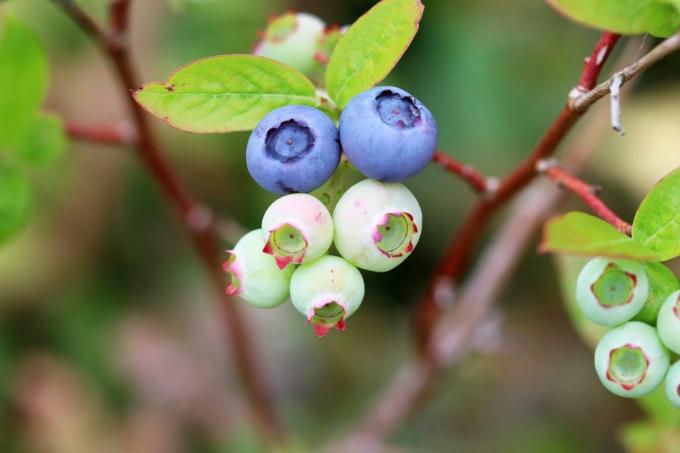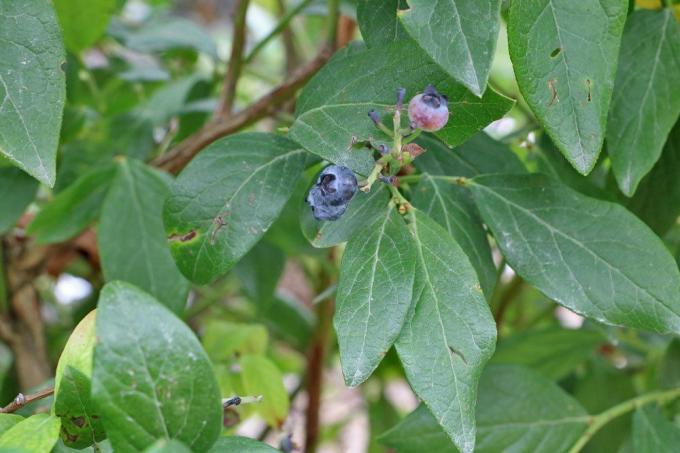
table of contents
- Bilberry - blueberry
- Cultivated blueberry
- Wild blueberry
- Blueberries in the garden
Are blueberries and blueberries the same thing? The berries in different sizes and shades of blue inspire with their aroma in summer and autumn and only very few People wonder if there is a difference between the names or if these are the same plant acts. The term blueberry is often used together with blueberry and the transitions are fluid depending on your habit. There is much more to the terms.
Bilberry - blueberry
Botanical name explains
First of all: Yes, blueberries are different from blueberries, even if not at first glance. Few people can really tell apart bilberries and blueberries, but both belong to the same genus. Vaccinium is a genus within the heather family (bot. Ericaceae) and up to 500 species are mostly found in the northern hemisphere. The cranberries (bot. Vaccinium vitis-idae) and cranberries (bot. Vaccinium oxycoccos). The two types, which are often grouped together to form a berry, are called in Latin as follows:
- Vaccinium corymbosum (American blueberry)
- Vaccinium myrtillus (wild blueberry)
As you can see, the two berries are different from each other. But which is the blueberry and which is the bilberry? The real bilberry is Vaccinium myrtillus, which is the one Wild blueberrywhich originally comes from Europe and which you will find wild in most cases. Vaccinium corymbosum, on the other hand, is never called that in Europe, but always blueberry. Another term is Cultivated blueberry, which illustrates the benefits of this type a little more clearly. This is because it is cultivated due to its properties and to a large extent, while wild blueberries are mainly planted by enthusiasts or occur wild.

tip: In the USA, the species are also known under different terms, but they are often grouped under the easy-to-understand “blueberry”. The name "bilberry", on the other hand, describes the European blueberries, including Vaccinium myrtillus in particular, which once again illustrates the difference between the two species.
Cultivated blueberry
The cultivated blueberry is what in the real sense Blueberry is called. At the same time, these are the sweet, blue berries that you can buy in the supermarket or at the weekly market. Cultivated blueberries actually come from North America and are used there for as long as forest blueberries are used in Europe. The big difference to this one: You don't dye. Cultivated blueberries are not blue on the inside and even the peel contains only a few coloring agents. Because of this, you can easily buy “blueberries” in the store without worrying about walking around with your tongue colored blue. The following additional features at a glance:
- Subshrub with heights of up to four meters
- Berries 1-3 centimeters in diameter, depending on the variety
- fresh taste, depending on the variety
- Colors of the berries very different
- these range from light pink to a deep black-blue
Due to the original distribution area, the majority of all varieties of blueberries come from the USA. New varieties are grown here every year, which you can easily plant in the garden.
tip: In addition to the cultivated blueberry, there are other types of blueberry that come from North America. However, their cultivation is primarily commercial utilized. We are talking about the Huckleberrys (bot. Vaccinium ovatum), which are reminiscent of very dark blueberries and of course immediately reminiscent of the fictional character of the American author Mark Twain.
Wild blueberry
If you go for a walk in the local woods and come across a blueberry bush, then in all likelihood it is blueberries, Vaccinium myrtillus. The species occurs all over Europe, which can be recognized by names such as the French "myrtille" or the Italian "mirtillo". They are significantly smaller than the cultivated varieties of the blueberry and even the few varieties of the wild blueberry have one thing in common: the taste. Forest blueberries always taste the same in terms of their actual aroma. The only differences in taste are revealed by the soil in which the shrub grows. The typical features are:
- Dwarf shrub up to 60 centimeters in height
- can live up to 30 years
- Foliage turns red in autumn
- is a deciduous plant
- Berries have a maximum diameter of about one centimeter
- are dark blue
- can be provided with blue-gray rings
- Leaves slightly poisonous
The intensely aromatic taste is unique about the wild blueberries. Compared to the American blueberry, the taste is much stronger and more nuanced. For this reason, it is ideal for making jams and compotes.
Blueberries in the garden
Due to the above differences between the two species, you will probably have noticed which of these are more popular for growing in your own garden. Cultivated blueberries are bred to a large extent compared to forest blueberries and numerous varieties are brought onto the market that are suitable for every garden. Forest blueberries are also offered for your own cultivation, but are not really popular due to the ingredients they contain, unless you want to use them for dyeing. In addition, there are not nearly as many varieties as there are blueberries, which makes the selection not really interesting. Nevertheless, there are gardeners who prefer the native plants.





